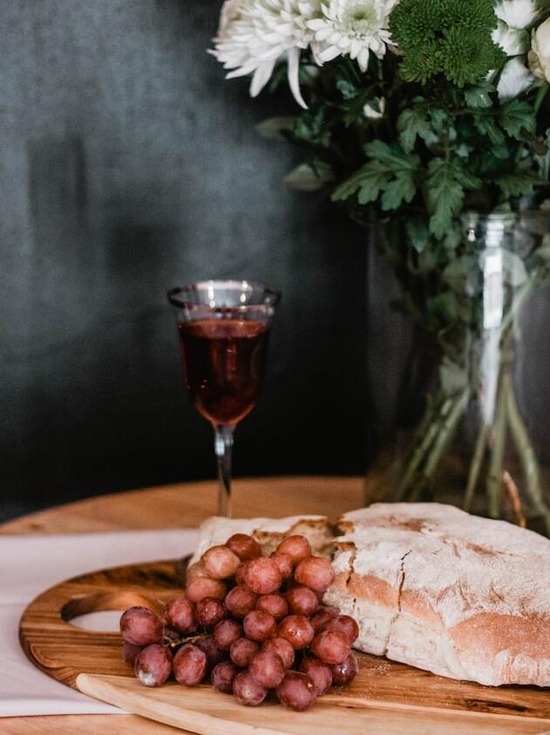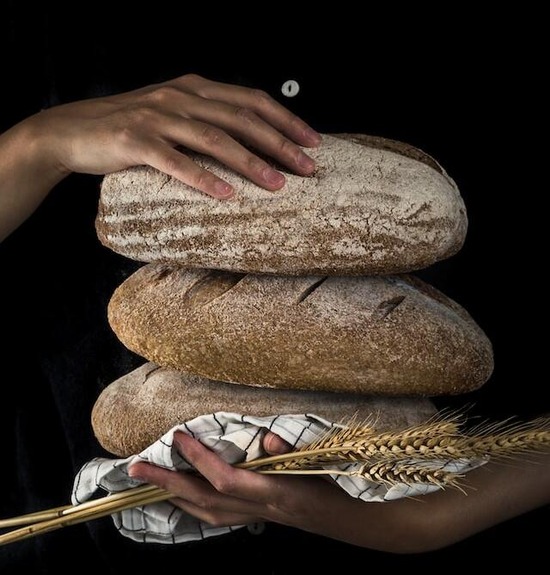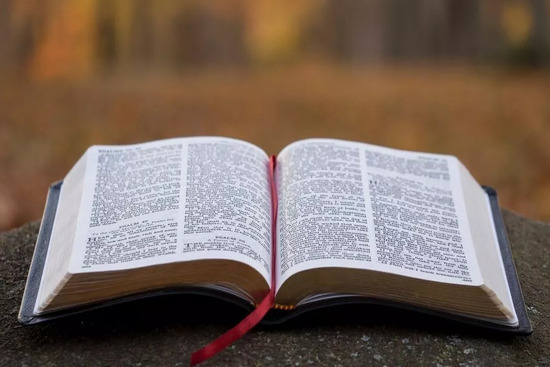Do Adventists Celebrate Communion and Foot Washing?
Like many Christian denominations, Adventists regularly participate in communion, also referred to as the “Lord’s Supper” or the “Last Supper.” They also practice foot washing (John 13:1-20), or the “ordinance of humility,” during the service—which isn’t as common.
Adventists worship services don’t typically include communion every Sabbath. But it’s also not solely reserved only for certain time of year, such as Maundy Thursday or Easter. Instead, most Adventist churches celebrate communion once per quarter, or every three months.
But what exactly does this communion service involve? And does it follow what the Bible says about what it should be like?
We’re about to answer:
- Where the idea of communion comes from
- What Adventist communion services are like
- Why Adventists have a foot washing service (and what they’re like!)
- Why Adventists celebrate communion
First, let’s get some background information from the Bible.
Where does the idea of Communion come from?
The idea of communion comes directly from the Gospels in the New Testament of the Bible. Commonly referred to as the Lord’s Supper or the Last Supper, it commemorates the meal Jesus shared with His disciples before being crucified.
This meal is described in each of the Gospels in the following passages: Matthew 26:26-30, Mark 14:22-26, Luke 22:14-30, and John 13:1-30. Each of these accounts explains that the Lord’s Supper happened on the same day as another ceremonial meal—the Passover.
This Jewish ceremony celebrates how God delivered the Hebrews—the Jews’ ancestors—from slavery (Exodus 12:24-27). This traditional meal called for specific foods like unleavened bread and lamb served with bitter herbs (Exodus 12:14-20). Many of these foods had symbolic meanings. They served lamb to represent the lamb that was sacrificed to protect the Hebrews from God’s plague on the Egyptians (Exodus 12: 24). They served unleavened bread to symbolize how the Hebrews didn’t have much time to let the bread rise before fleeing Egypt (Exodus 12:11).
As Jews, Jesus and His disciples were sure to participate in this traditional dinner. They met in the upper room of a house to eat it together.
It was the same Passover meal they’d had plenty of times before.
Until Jesus decided to do something new:
“When the hour came, Jesus and His apostles reclined at the table. And He said to them, ‘I have eagerly desired to eat this Passover with you before I suffer. For I tell you, I will not eat it again until it finds fulfillment in the kingdom of God.’
After taking the cup, He gave thanks and said, ‘Take this and divide it among you. For I tell you I will not drink again from the fruit of the vine until the kingdom of God comes.’
And He took bread, gave thanks and broke it, and gave it to them, saying, ‘This is My body given for you; do this in remembrance of Me.’
In the same way, after the supper He took the cup, saying, ‘This cup is the new covenant in My blood, which is poured out for you’” (Luke 22:14-20, NKJV).
Jesus knew He was about to die. He knew how the Jewish leaders were plotting to convince the Romans to crucify and beat Him like a criminal of the state. He knew He would be sentenced to death as an innocent man, for the sake of humanity’s sin.
He was facing an unimaginable amount of pressure—but still, Jesus wanted His disciples to understand what He was doing for them. So He related His soon death by comparing it to the Passover bread and wine. And with these symbols, He painted a picture of loving, selfless sacrifice.
Of course, it was no coincidence that the Passover was also all about sacrifice.
While the Israelites were in Egypt and the plagues were happening to the Egyptians, God gave instructions for escaping the final plague against the firstborn. God told the Hebrews to sacrifice a lamb and place its blood on their doorposts.
And even after they left Egypt, God continued to use the lamb as a symbol of salvation.
Looking back at the time of the Israelites’ journey through Egypt, God knew He was working with a group of newly-freed slaves who were largely uneducated. So He set up a symbolic sacrificial system for them to fully understand the idea of a holy and innocent Savior (Jesus Christ, or the Messiah) being a substitute for our sins’ penalty, which in turn allows us to be reconciled to God.
This symbolic process involved sacrificing a gentle, innocent lamb to pay the price for going astray from God. Doing this uncomfortable and unpleasant act would allow them to gain forgiveness for their sins.
These ceremonies prepared the Hebrews to fully understand the cost of sin—and the ultimate length God was willing to go to save them from it.
Both the Passover lamb and the sacrificial lamb pointed toward the same thing. They were foreshadowing the soon sacrifice of Jesus, the “Lamb of God” (John 1: 29).
And since the whole purpose of these ceremonies was to prepare the Hebrews for the sacrifice of Christ, they had no need for these practices when He died.
In other words, we no longer needed a symbol of Jesus’ sacrifice now that we have the story of the crucifixion of Christ. We can fully appreciate and accept the real thing.
That’s why, in Passover’s place, God created a new ceremony—one that wouldn’t only point forward to Jesus’ sacrifice, but point backward to how He accomplished this on the cross.
(Though it also points forward to the second coming of christ…since Jesus told His disciples that He “will not drink from this fruit of the vine from now on until that day when I drink it new with you in My Father’s kingdom” [Matthew 26:29, CSB].)
What are Adventist Communion services like?

Photo by Sincerely Media on Unsplash
Adventist Communion services are similar to that of other Protestant churches. The only major difference is that we observe the foot washing service Jesus speaks of in John 13:8-11.
The word communion means “an act of sharing” or “an intimate relationship with deep understanding.”1 And that’s exactly the way Adventists think of it. It’s a time to come together with fellow believers and remember what Jesus did for us.
And by fellow believers, we mean anyone who professes Christ as their savior.
That’s right—our Communion service isn’t restricted to Adventists. Anyone who wishes to celebrate what Jesus did for us is welcome to join in, church member or not.
So if you walk into an Adventist Church on a Communion Sabbath, the worship service will likely begin as usual. Though you may see that up front, there’s a table with stacked trays of Communion bread.
Communion Sabbath typically happens every three months. There’s no special reason for its timing. We just want it to happen often enough to refresh our minds of Jesus’s sacrifice, but not so often that it becomes a mindless ritual.
Of course, Communion services can vary from congregation to congregation. But the one element all Adventist services have in common is the use of the “emblems”—sharing the unleavened bread and the “fruit of the vine,” or grape juice.
We have special containers reserved for the Communion service. The small grape juice glasses are placed in a special container with slots for the small cups of juice, rather than drinking from a communal cup. The pieces of bread are placed on a matching plate, usually covered with a cloth before serving.
Now, when we say bread, we don’t mean a fluffy loaf of brioche or rye.
The bread Jesus ate was unleavened per Passover specifications (Deuteronomy 16:3). For this reason, the bread at our Communion is also unleavened. A member of the church, or deacons or deaconesses, will often volunteer to make the bread using a combination of flour, salt, and water. The result is a soft, cracker-shaped bread similar to a graham cracker. And it still tastes pretty good.
Instead of using fermented wine, we use grape juice. This is mainly for practicality and health reasons. Though, in general, most Adventists avoid alcohol.
One last note to make is that Adventists believe the bread and grape juice are only symbols of Jesus’ body and blood—not His actual flesh. As a church, we don’t believe in transubstantiation, which teaches that a priest can say a prayer of consecration that transforms the bread and wine into the literal body and blood of Christ.2
But whatever you believe about the nature of the bread and juice, the whole idea behind all of this is that we remember why we’re celebrating this ritual—because Jesus Christ loves us so much that He was willing to have His body beaten and broken for us, and willing to have His blood spilled (to die) so that we won’t have to be forever separated from God.
The order of service
The church service might start with announcements, greeting one another, special music, Scripture readings, prayer, etc. Then it’ll transition into the “Last Supper” part of the service.
The “ordinance of humility,” or foot washing, might take place before or after the homily and the sharing of emblems. The worship leaders will provide instructions for where you’ll go to begin the foot washing.
The pastor or elders will introduce the Communion part of the service and this usually includes a reading of one of the passages from the Gospels that describes the very first Communion. Then they’ll pray over the bread and juice.
Next, elders or deacons will take the trays around to the congregation, making sure everyone wanting to participate gets a piece of bread and a small cup of juice.
But the congregation doesn’t eat the bread right away. We’ll wait until the pastor’s signal, so we can all do it together in remembrance.
Often, this “signal” is reading the verses from the Gospels—the first for eating the bread, the second for drinking the juice.
“And He took bread, gave thanks and broke it, and gave it to them, saying, ‘This is My body which is given for you; do this in remembrance of Me’” (Luke 22:19, NKJV).
“Then He took the cup, and gave thanks, and gave it to them, saying ‘Drink from it, all of you. For this is My blood of the new covenant, which is shed for many for the remission of sins’” (Matthew 26:27-28, NKJV).
After this, there might be a moment of silence, some singing, a few more words from the pastor, or it may be time for some churches to dismiss for foot washing.
Our intentions in upholding this ceremony is to fulfill Jesus’ call to “do this in remembrance of Me” (Luke 22:19, NKJV).
And it also reflects how in all things, the Seventh-day Adventist Church aims to follow the guidance and framework we find in the Bible. And that includes following Jesus’ lead in practicing foot washing along with Communion.
Why Adventists have a foot washing service (and what they’re like!)
Adventists practice foot washing because Jesus asks Christians to wash one another’s feet (John 13:14). Yes, it can be awkward and a little more intimate than most social interactions we’re used to, but that’s also why it’s referred to as the “ordinance of humility.” We are reminded that we’re here to serve one another.
The Gospel of John describes the account of Jesus washing the disciples’ feet. And it’s interesting how the disciples, namely Peter, react:
“Peter said to Him, ‘You shall never wash my feet!’ Jesus answered him, ‘If I do not wash you, you have no part with Me.’ Simon Peter said to Him, ‘Lord, not my feet only, but also my hands and my head!’ Jesus said to him, ‘He who is bathed needs only to wash his feet…” (John 13: 8-10, NKJV).
The washing of feet was actually common during those times, so Peter wasn’t reacting at the idea of washing feet. What he was riled up about was that Jesus would lower Himself to do such a subservient act.
Most of the time, a servant was assigned to wash the feet of their masters. And with all the walking on dirt paths in sandal-wearing feet, you can imagine that this wasn’t a pleasant task.
Add to this that the disciples were still caught up in the idea of being significant in the kingdom of God. And yet this man washing their feet was whom Peter confessed was indeed “the Christ, the Son of the living God” (Matthew 16:16, NKJV). So he felt that such a lowly act shouldn’t be something that Jesus, their master and teacher, should be doing for them, who merely follow Him!
But that’s exactly why Jesus did this. He was intentionally showing a servant-leadership attitude toward His beloved followers. He showed them that being a Christian is not all about holiness or piety…it’s about being willing to get down in the dirt in order to serve someone.
Jesus defied ranks and roles, showing how everyone should treat everyone else.
That’s why we feel it’s important to do the same in our Communion services.
And here’s what it’ll probably be like at a typical Adventist Communion service:
When it’s time for foot washing, the congregation will leave the sanctuary and split into groups. Most of the time, women go to one area and men to another. There’s often an area for families, too. This is mainly to ensure that everyone who participates feels comfortable and appropriate.
These groups will go into different rooms where deacons and deaconesses (members of the church responsible for helping out with the church service) will have prepared towels and bowls of warm water. People will pair up and wash each other’s feet.
The foot washing doesn’t involve any scrubbing or soap. The feet will just be submerged and gently splashed with water.
After washing a person’s feet, they’ll use the towel to dry them off. Then the partners will switch.
After you and your partner’s feet are cleaned, you will have the opportunity to pray together. This will give you the chance to form a deeper connection with those in your faith community.
But even though there are so many benefits to this, the ordinance of humility is not required. No part of any church service is. So if you’re new and just not quite ready for this, it’s ok to opt out and stay in the sanctuary. You can take this time to pray, reflect, or read more about the Communion stories in the Gospels.
But you can be assured that foot washing doesn’t have to be awkward or burdensome. In fact, it blesses the congregation in a variety of ways. When we wash others’ feet we are reminded to humbly serve others. And when we accept the washing from someone else we are reminded of Jesus’ promise to cleanse our lives of sin and our fellow believers’ role in encouraging us to follow Jesus.
Why Adventists practice Communion

Photo by David Weber on Unsplash
First and foremost, it’s because of Jesus’ command to remember His sacrifice through the Lord’s Supper. He tells us to eat the bread and drink the grape juice in remembrance of Him.
It’s a way for us to regularly remember and reflect on the sacrifice Jesus made for us. And as busy as we get, sometimes we need a reminder. Sometimes we forget the magnitude of the price Jesus paid for us. Life can be so full of spiritual distractions.
But when we remember it, we can be humbled by the wonderful gift of grace. We remember that when we accept His sacrifice, we accept His love—and become a new person, continually being sanctified by the Holy Spirit.
And Jesus had a very particular way of reminding us of this. He didn’t tell us just to think or pray about His sacrifice every so often—He had us remember it through a meal. He chose to help us remember by comparing His body and blood to sustenance.
Think of it this way: when you’re eating something, you absorb it into your body. In a way, it becomes a part of you. It helps sustain you. In the same way, when you accept Jesus’ sacrifice, it should have an impact on your entire life—the way you live, the way you treat others, and the way you think of God.
It’s not just a matter of passively accepting the gospel, but learning to actively include the gospel in your everyday life. And just like the humble service of foot washing, Communion is yet another way of inviting the Holy Spirit to help you be more like Jesus.
We see the foot washing service as an extension of Communion, as it provides yet another reminder of the spirit of Christianity—loving others as Christ has loved us.
We think of this time as an opportunity to recommit our lives to Jesus and remember what He did for us. You might notice an especially reverent tone in an Adventist Church when Communion is being held. After all, thinking about the death of our Savior is a somber subject. But even considering the heavy cost of sin and the price Jesus paid to deliver us, we find hope.
Jesus’ gift of reconciliation with God, and eternal life with Him, isn’t something we take lightly. The cost of sin is great, but the price God paid for us is even greater. So we can use Communion as a time of deep gratitude, and to enjoy the fellowship of those who share this gratefulness toward our Creator and Savior.
Want to learn more about Adventist church services in general? Take a look at
Ready to attend a Communion service? Find an Adventist Church close to you and find out when the next Communion is scheduled on the calendar.
Related Articles
Questions about Adventists? Ask here!
Find answers to your questions about Seventh-day Adventists
More Answers
Why Many Seventh-day Adventists Choose a Vegetarian Diet
Why Many Seventh-day Adventists Choose a Vegetarian Diet?You may have an Adventist friend who is vegetarian, or maybe you’re attending a Seventh-day Adventist Church for the first time and notice the potluck doesn’t have any meat. This isn’t unusual in Adventism. In...
The Health Benefits of Fresh Air You Should Know About
The Health Benefits of Fresh Air You Should Know About“When you can’t breathe, nothing else matters,” the American Lung Association tells us. And while that’s true, the kind of air you’re breathing will determine the health benefits you experience. Breathing fresh...
What Do Seventh-day Adventists Choose to Eat?
What Do Seventh-day Adventists Choose to Eat?Food blogs overwhelm the internet; food fads are all the rage; and copycat and healthy versions of food are the subject of many a get-together. Eating—and eating the best way—is a big deal. And everybody has a different...
10 Incredible Ways Sunlight Can Improve Your Health
10 Incredible Ways Sunlight Can Improve Your HealthAre you concerned about sunlight’s negative effects? You might be the one who lathers on the sunscreen and covers up when you go outside. Or maybe you avoid being outside as much as possible. You might be surprised,...
Why Is Water So Important?
Why Is Water So Important?We all know that water is a substance we can’t live without. It quenches our thirst and keeps us hydrated on the inside. And it’s necessary for hygiene and cleansing on the outside too. But did you know that the cleansing properties of water...
Ellen White’s Writings and the Adventist Health Message
Seventh-day Adventists are known for their emphasis on healthy living. And Ellen G. White was a significant influence in the development of this priority and practice among Adventists.
Health Clinics
Ellen White and Adventist Healthcare—Ahead of Their Time Medical care in the mid-1800s was primitive, to say the least. Basic concepts we take for granted—such as proper handwashing or recognizing the dangers of bloodletting—were nonexistent. And doctors often had...
What Did Ellen White Teach about Vegetarianism?
What Did Ellen White Teach about Vegetarianism?One thing you might have heard about Seventh-day Adventists is their emphasis on a vegetarian lifestyle. If you’re wondering why that is, it goes back to our church’s humble beginnings: As Adventists studied the Bible,...
How Ellen White’s Teachings Can Improve Your Health
How Ellen White’s Teachings Can Improve Your Health Healthcare in the nineteenth century was said to leave “more disease than it took away” with its use of bloodletting and “medicines” like mercury and arsenic.1 As people questioned these methods, new approaches...
Change Your Perspective on Life with These 5 Mindsets
5 Biblical Mindsets to Change Your Life for the Better Sometimes, life is just plain hard. There’s no way around it. So would thinking about things differently really change anything? Our perspective on life, and everything it throws at us, affects more than we’re...
Bible Promises for When You’re Worried or Fearful
Bible Promises for When You’re Worried or Fearful The Bible is full of beautiful promises that can comfort us in a variety of situations. They can give us hope when we are hopeless, make us feel grateful for God’s love, and comfort us when we’re grieving or suffering....
12 Practical Ways to Overcome Worry
12 Practical Ways to Overcome Worry DISCLAIMER: This content is for informational purposes only. It does not constitute any professional medical advice and is not intended as a substitute for professional mental health therapy. It’s easy to get stuck in a cycle of...
How the Bible Talks About Worry, Fear, and Anxiety
How the Bible Talks About Worry, Fear, and Anxiety Worry and fear are the ingredients of anxiety. It’s easy to see how the world isn’t perfect—and the anticipation of a bad event or experience (that may or may not even happen) can end up draining the peace and...
How to Calm Anxious Thoughts, Using the Bible
How to Calm Anxious Thoughts, Using the Bible You were expecting a phone call from your daughter half an hour ago, and she still hasn’t called. She’s also not answering your calls. You feel your heart thumping as your thoughts race: What if she’s been in a car...
What You Should Know About the Adventist Health Studies
What You Should Know About the Adventist Health StudiesYou may have heard that Seventh-day Adventists care about health. But what you may not know is that Adventists have been the subjects of long-term research into lifestyle and health. Since 1958, researchers from...
Benefits of Sunlight
Yes, There Are Health Benefits of SunlightDespite the bad reputation it’s gotten, sunlight is generally associated with positivity, as shown by songs like “You Are My Sunshine,” or phrases that refer to delightful people as having a “sunny disposition.” There’s a...
Why Your Body Needs Rest for Optimal Health
Why Your Body Needs Rest for Optimal HealthStruggling to think straight? Wondering why you can’t remember that important tidbit you heard earlier today? Feeling like your emotions are about to explode? These are just some of the symptoms that can reveal your need for...
The Seventh-day Adventist Diet: One of Our Key Longevity Secrets
The Seventh-day Adventist Diet: One of Our Key Longevity SecretsOats, avocados, lentils, tofu—probably not what you first think of in a standard American diet. But if you show up at the home of an Adventist, chances are you may be served one of these staples. Out of a...
Why You Need Fresh Air
Why You Need Fresh Air“When you can’t breathe, nothing else matters,” the American Lung Association tells us. We couldn’t agree more! Breathing in clean air is an essential part of caring for our bodies, which God has given us. Together with other health principles,...
Sabbath Meal
Everything You Need to Know About Sabbath MealsFor Seventh-day Adventists, sharing a Sabbath meal with friends and family is one of the most special and memorable parts of the Sabbath. That’s why we want to share with you all about Sabbath meals and why they’re such a...
Adventists and Healthy Living
Adventists and Healthy LivingWhat’s the Adventist “Health Message” All About? One thing Seventh-day Adventists are known for is their emphasis on living healthy lives. Since our bodies are living temples of the Holy Spirit (1 Corinthians 6:19, 20), we strive to stay...
Water’s Importance—Physical Benefits and Spiritual Applications
Water’s Importance—Physical Benefits and Spiritual Applications We all know that water is a substance we can’t live without. Not only does it quench our thirst and keep us hydrated from the inside, but it’s necessary for hygiene and cleansing on the outside as well....
How Important is a “Day of Rest?”
How Important is a “Day of Rest?” Why God Created a Day for Downtime by Martin Casper Do you ever experience the feeling of complete overload? Do you feel like the only way you can get ahead is by slamming it 24/7? I hear these types of comments more and more...
7 Reasons Why a Day of Rest is Important
7 Reasons Why a Day of Rest is ImportantWe live in a fast-paced world. It seems as if success is measured in how much you can do in a short amount of time. (Extra points for the service or product that is available 24/7). The idea that we will be more successful if we...
How do Adventists choose what to eat?
How do Adventists choose what to eat?Every day, parents go through the ritual of getting their kids to eat what is healthy and good while trying to steer them away from what can hinder the growth of their developing bodies. Nutritionists work with their clients to...
How Can I Have a Better Marriage?
Is it possible to have a happy marriage?
Why are many Adventists Vegetarian?
Why are many Adventists Vegetarian?The diet intended for man is outlined in Genesis 1:29, “And God said, ‘See, I have given you every herb that yields seed which is on the face of all the earth, and every tree whose fruit yields seed; to you it shall be for food.’”...
Didn’t find your answer? Ask us!
We understand your concern of having questions but not knowing who to ask—we’ve felt it ourselves. When you’re ready to learn more about Adventists, send us a question! We know a thing or two about Adventists.
























